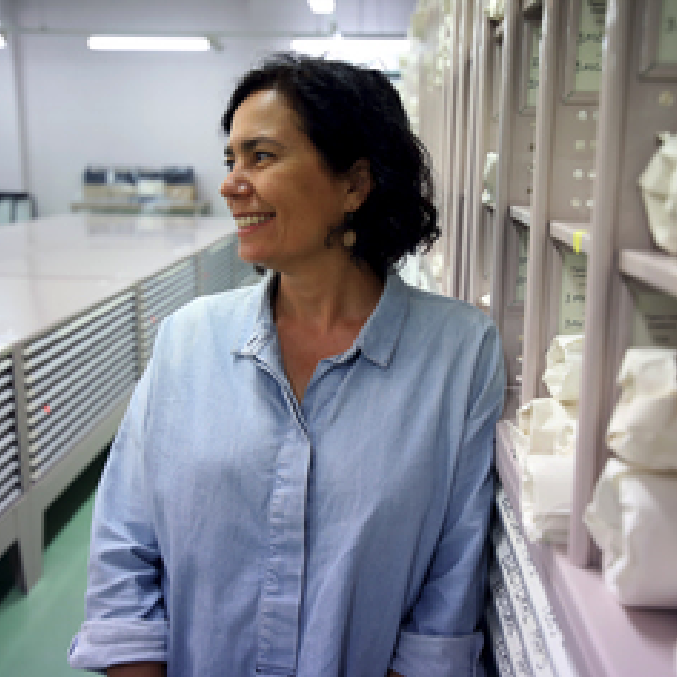
The name connects the Berlin suburbs with the American South and reminds us of what racist place names can reveal—or obscure.


The name connects the Berlin suburbs with the American South and reminds us of what racist place names can reveal—or obscure.
“Uncle Tom’s Cabin,” the title of an anti-slavery novel by Harriet Beecher Stowe, likely brings to mind the pre-Civil War era United States. But the title lives on today, in places far from the American South (geographically speaking, at least). It’s also the name of a neighborhood on the outskirts of Berlin, and a stop on a city subway line.
There’s some debate over whether “Onkel Tom’s Hütte” references a late 19th-century local beer garden owner named Thomas, or Stowe’s novel and the anti-black slur contained in its title. For many Black Germans, though, it’s yet another sign of the largely unacknowledged anti-Black racism baked into German culture.
“I was so confused,” Moses Pölking told the Washington Post. “Because I didn’t know if what I was thinking was actually the reason behind the name, or if it was just a funny coincidence.” After reading Beecher Stowe’s book, Pölking began to “connect more dots.” The name was not only to the Berlin neighborhood but also to a nearby street—Onkel-Tom-Strasse—and a Bauhaus housing development.
Pölking, a Black German who was born to German and Cameroonian parents, started a petition to change the name. It has garnered 14,000 signatures, but so far hasn’t led to any official changes. “What I’m asking for is not much,” said Pölking, now 24. He adds that it’s disappointing to see resistance and counterpetitions in response to his request.
The answer to the question of why, exactly, the title of a 170-year-old novel about American slavery is on geographical signs in Germany lies in the country’s fascination with the iconography and stories of the American South and its racial dynamics. Cedric Essi, a postdoctoral researcher at the University of Osnabrück, told the Washington Post, “I would understand this weird fascination with the South as a safe way to engage with desires of white supremacy.”
Germany, more than most modern nations, has had to grapple with the consequences of extreme ethnic prejudice following the actions of World War II. Today, many Black Germans would tell you that anti-Black prejudice and discrimination remain widely unacknowledged. But Germany took part in the transatlantic slave trade, established multiple colonies in sub-Saharan Africa, received waves of immigrants from its former colonies, and fosters a deep interest in the American South.
Uncle Tom’s Hütte is one of many place names that speak of racist or hateful histories—not just in Germany, but around the world. In the contemporary southern US, questions over taking down confederate monuments are still being debated. And the names and places in question aren’t just relics of antiquated and defunct ideas—a violent rally of white supremacists took the street of Charlottesville as recently as 2017, and protests of police brutality following the murder of George Floyd in 2020 underscore the racism still present.
It’s (hopefully) self-evident why violent acts of white supremacy are bad, but how exactly do those events connect with what we call the places we go?
At the most basic level, we could say that holding onto the hate and prejudices baked into place names like “Uncle Tom’s Hütte” enables a worldview where white people are superior to all other racial groups. This is probably true, but there’s more to it than that.
Our names for places are a way that something full of cultural meaning—language—gets baked into the seemingly-fixed, apolitical geography of the land itself. Indigenous people in the United States have long been calling for names of violent colonizers and oppressors to be removed from significant Indigenous lands, and for more colonial names to be replaced with Indigenous ones.
When we call Washington state’s largest volcano “Mount Rainier,” for example, we can pretend that no one had seen, climbed, or admired the peak before George Vancouver encountered it at the end of the 18th century. On the other hand, implicit in calling it by one of the names used by the local tribes—Tahoma, Tacobeh, Pooskaus—is the recognition that entire cultures and civilizations lived there long before the arrival of outsiders.
As a decision of language and culture, the choice of what to call someplace is not just a logistical one. It’s also a choice of what history to remember and to obscure, what social hierarchy to perpetuate, and what worldview to imprint into our every interaction with the physical world. As we continue to see more landmarks, neighborhoods, and monuments renamed in a way to acknowledge history from different perspectives, the opportunity to look critically at our cultures—and ourselves—presents itself.

Miyo McGinn is Adventure.com's US National Parks Correspondent and a freelance writer, fact-checker, and editor with bylines in Outside, Grist, and High Country News. When she's not on the road in her campervan, you can find her skiing, hiking, and swimming in the mountains and ocean near her home in Seattle, Washington.






Can't find what you're looking for? Try using these tags: